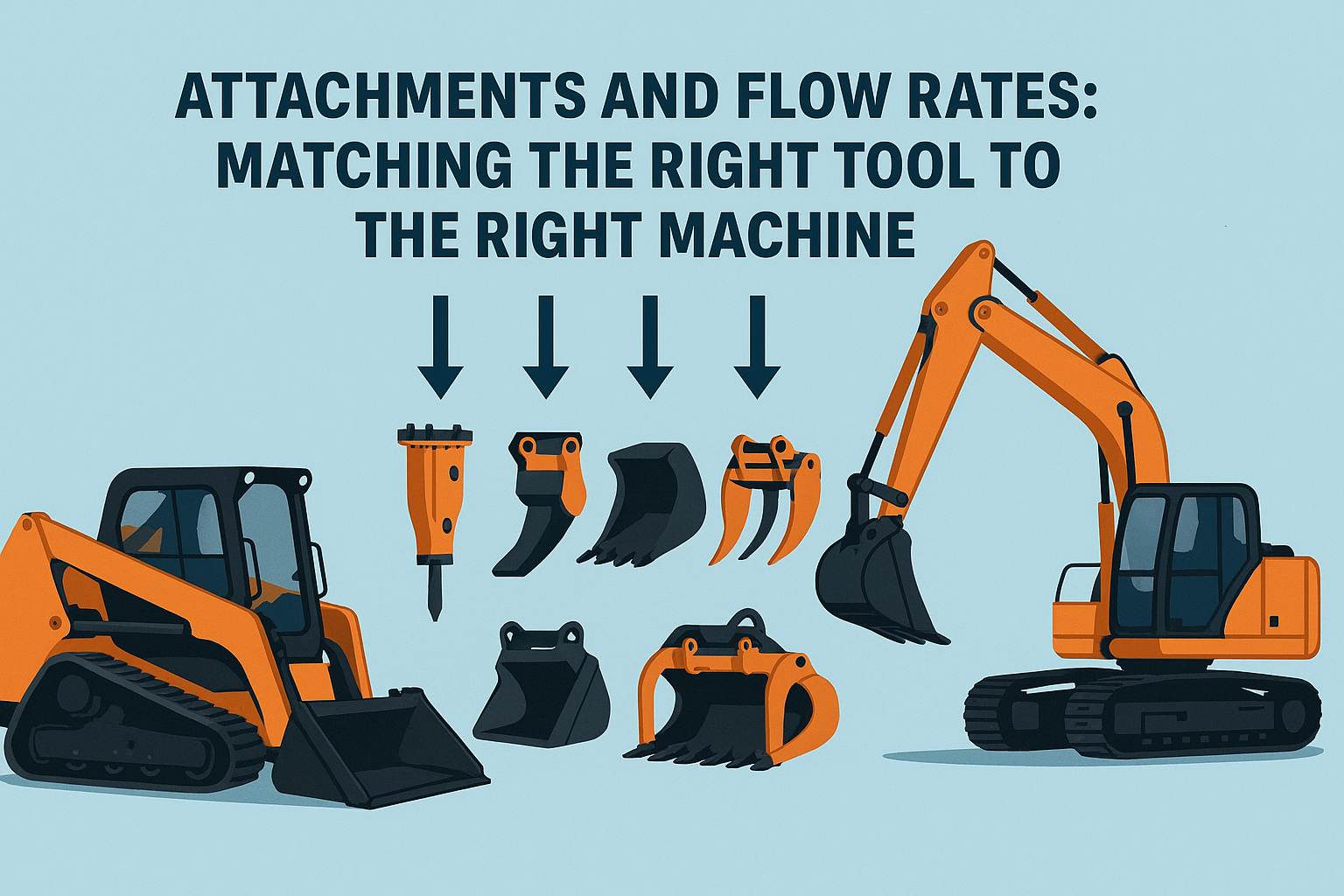Iron Insights
Attachments and Flow Rates: Matching the Right Tool to the Right Machine
When it comes to heavy equipment, efficiency isn’t just about horsepower or operator skill—it’s also about using the right attachments at the right flow rates. Understanding your machine’s auxiliary hydraulics, pressure limits, and flow control is key to maximizing performance, extending the life of your equipment, and ensuring safety on the job site.
Understanding Auxiliary Hydraulics
Auxiliary hydraulics are the lifeblood of most attachments, from hydraulic hammers and grapples to augers and brush cutters. Your machine’s auxiliary system powers these tools, delivering hydraulic fluid at specific pressures and flow rates. Knowing how your machine’s hydraulic system operates helps you avoid underpowered tools or, worse, damage caused by exceeding pressure limits.
When selecting an attachment, check your machine’s hydraulic specifications. Each attachment is designed to operate within a recommended pressure range and flow rate. Installing a tool that requires more flow than your system can provide will result in sluggish performance and increased wear, while supplying too much pressure can damage both the attachment and your machine.
Pressure Limits: Don’t Overdo It
Pressure is often measured in PSI (pounds per square inch) or bar, and every hydraulic attachment has a maximum operating pressure. Exceeding this limit can lead to catastrophic failure, hydraulic leaks, or blown hoses. Modern machines often include adjustable pressure relief valves or load-sensing hydraulics to protect the system, but operators still need to understand the numbers.
A simple rule of thumb: always match or slightly undercut the attachment’s maximum pressure rating. This ensures the attachment functions correctly while preserving the longevity of your hydraulic system.
Flow Control: Fine-Tuning Performance
Flow rate, measured in gallons per minute (GPM) or liters per minute (L/min), determines how fast a hydraulic attachment moves. For example, a hydraulic hammer operating at a lower-than-recommended flow will pound more slowly, reducing productivity. Conversely, an auger running at too high a flow can spin uncontrollably, creating safety hazards and accelerating wear.
Many modern machines feature flow control settings that allow operators to fine-tune how much hydraulic fluid is sent to the attachment. Adjusting flow for the specific task and attachment type can dramatically improve efficiency. For instance, a grapple might require full flow for lifting large debris but only partial flow for precise placement.
Matching the Right Attachment to Your Machine
The key takeaway is that attachments are not one-size-fits-all. A compact excavator has a very different hydraulic capacity than a full-size loader. Before adding a new tool:
1. Check the machine’s auxiliary hydraulic specs – including maximum pressure and flow.
2. Review the attachment requirements – look for flow and pressure ratings on the manufacturer’s spec sheet.
3. Use flow control wisely – adjust for precision or power depending on the job.
4. Consult the operator’s manual – it contains crucial guidance on compatible attachments and safe operating ranges.
Maximizing Efficiency and Longevity
Matching attachments with the correct hydraulic flow and pressure isn’t just about performance—it also protects your equipment. Correctly matched systems reduce heat buildup, minimize wear on hydraulic components, and prevent costly downtime. Operators who understand and respect their machine’s hydraulic limits can work faster, safer, and with more confidence.
________________________________________________________________________________________________________________________________________________________________
Whether you’re running an excavator, skid steer, or wheel loader, taking the time to understand auxiliary hydraulics, pressure limits, and flow control can transform how you work on the job site. The right tool, matched with the right machine, isn’t just smart—it’s efficient.

